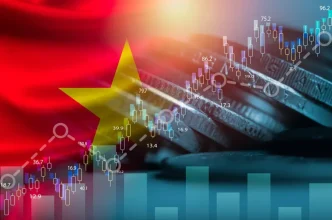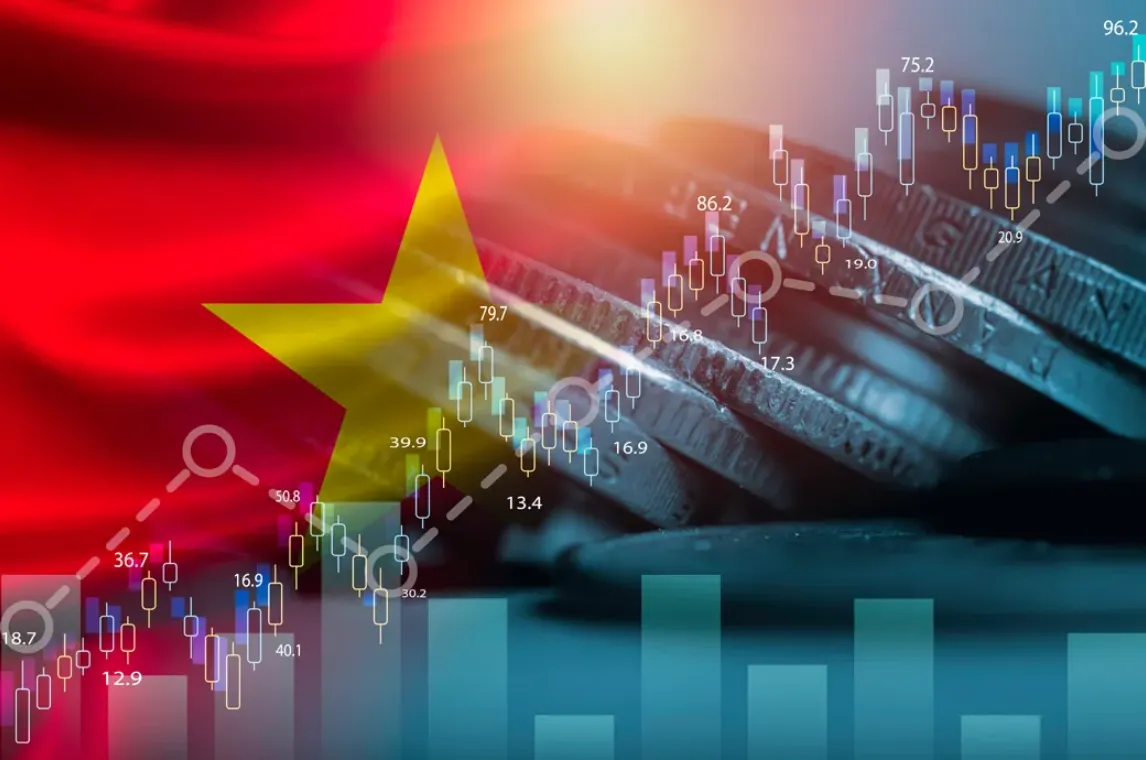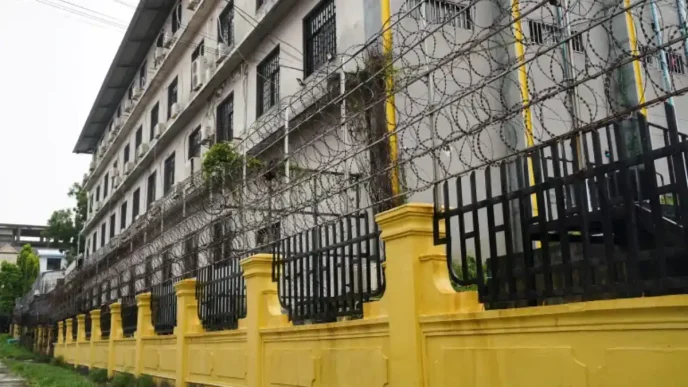Vietnam has sustained a trajectory of positive socio-economic performance in the first half of 2025, marked by robust GDP growth, rising foreign investment, and significant strides in infrastructure development. Speaking at a recent National Assembly session in Ha Noi, Prime Minister Pham Minh Chinh highlighted the nation’s achievements, crediting strategic policy reforms and global economic integration. Yet, beneath the surface of these gains lie persistent challenges—ranging from inflationary pressures to regional disparities—that could test the resilience of Vietnam’s growth model in the years ahead.
Economic Growth and Key Drivers
Vietnam’s economy has shown remarkable strength in 2025, with preliminary figures suggesting a GDP growth rate of around 6.5% for the first two quarters, according to data from the General Statistics Office. This performance aligns with the government’s target of 6-6.5% annual growth, driven largely by a rebound in manufacturing, exports, and foreign direct investment (FDI). The technology and textile sectors, in particular, have benefited from trade agreements like the Comprehensive and Progressive Agreement for Trans-Pacific Partnership (CPTPP), positioning Vietnam as a key player in global supply chains.
Prime Minister Chinh emphasized the role of FDI, noting that disbursed capital reached approximately 10 billion Vietnamese Dong (US$400 million) in the first five months of 2025. “Our policies to attract high-quality investment have yielded results” he stated during the assembly session, as reported by Vietnam News on May 20, 2025. Major projects in Ho Chi Minh City and Ha Noi, including semiconductor plants and renewable energy initiatives, underscore Vietnam’s appeal to multinational corporations seeking alternatives to traditional manufacturing hubs.
Exports, a cornerstone of Vietnam’s economic strategy, also saw a significant uptick, with a reported 15% year-on-year increase in goods shipped to markets in the United States and the European Union. Smartphones, garments, and agricultural products like rice and coffee remain top earners, reflecting the country’s diverse export base. However, analysts caution that reliance on external demand leaves Vietnam vulnerable to global economic fluctuations, a concern amplified by recent volatility in international markets.
Infrastructure as a Growth Catalyst
Beyond economic indicators, Vietnam’s socio-economic progress in 2025 is evident in its ambitious infrastructure agenda. The government has prioritized projects under the 2021-2030 Socio-Economic Development Strategy, with major investments in transport and urban development. The North-South Expressway, a flagship initiative, has seen accelerated construction, with several sections nearing completion. This project, costing an estimated 350 trillion Vietnamese Dong (US$14 billion), aims to connect Ha Noi to Ho Chi Minh City, slashing travel times and boosting regional trade.
In urban centers, metro systems in Ha Noi and Ho Chi Minh City are transforming public transport, though delays and cost overruns have drawn criticism. “The metro projects are vital for sustainable growth, but better oversight is needed” said Tran Van Nam, an urban planning expert based in Ho Chi Minh City, in an interview with state media on May 15, 2025. Rural areas, meanwhile, have benefited from electrification and road improvement programs, narrowing the urban-rural divide—a key focus of the Vietnam Fatherland Front, the nation’s leading socio-political coalition.
These infrastructure gains are not without hurdles. Land acquisition disputes and environmental concerns, particularly in the Mekong Delta, have slowed some projects. Public sentiment, as reflected in posts on X, reveals mixed feelings, with users praising connectivity improvements while voicing frustration over displaced communities. Balancing development with social and environmental considerations remains a critical task for policymakers.
Social Progress and Quality of Life
On the social front, Vietnam has made notable strides in improving living standards. Poverty rates continue to decline, with the Ministry of Labour, Invalids and Social Affairs reporting that less than 6% of the population lives below the national poverty line as of early 2025. Education and healthcare access have expanded, particularly in remote regions like the Central Highlands, where mobile medical units and digital learning platforms have been introduced.
Employment figures paint a positive picture, with unemployment dropping to 2.3% nationwide, driven by job creation in industrial zones and the burgeoning service sector. However, underemployment remains an issue, especially in rural areas where seasonal work dominates. Government initiatives to upskill workers for high-tech industries are underway, but experts warn that the pace of training must match the rapid shift toward automation in manufacturing.
Inflation, though moderated at around 3.5% in the first quarter of 2025, poses a lurking threat to household budgets. Rising costs for essentials like rice and fuel have sparked concern among low-income families, prompting calls for targeted subsidies. “Price stability is crucial to sustaining social gains” noted economist Le Thi Anh during a panel discussion covered by Vietnam News on May 18, 2025. The government has signaled plans to monitor market trends closely, but no concrete measures have been announced.
Regional Disparities and Policy Challenges
Despite Vietnam’s overall progress, regional disparities remain a significant barrier to equitable growth. While urban hubs like Ho Chi Minh City and Ha Noi thrive as economic powerhouses, provinces in the Mekong Delta and northern mountainous regions lag behind. Limited access to capital, outdated agricultural practices, and climate change impacts—such as salinization in the Delta—hinder development in these areas.
The government has rolled out regional development funds, allocating approximately 50 trillion Vietnamese Dong (US$2 billion) for 2025 to support lagging areas. Yet, implementation challenges persist, with local officials citing bureaucratic inefficiencies and corruption risks. While no concrete evidence of mismanagement has surfaced in recent reports, public skepticism—evident in online discussions on platforms like X—suggests a need for greater transparency in fund distribution.
Climate change adds another layer of complexity. Vietnam remains one of the countries most vulnerable to rising sea levels and extreme weather, with the Mekong Delta facing existential threats from flooding and saltwater intrusion. The government’s adaptation strategies, including dyke construction and sustainable farming pilots, have shown promise, but scaling these efforts requires international support and long-term planning.
Global Integration and Future Outlook
Vietnam’s socio-economic achievements in 2025 reflect its deepening integration into the global economy. Membership in trade blocs like the Regional Comprehensive Economic Partnership (RCEP) has opened new markets, while diplomatic efforts have strengthened ties with major powers like the United States, China, and the European Union. Prime Minister Chinh reiterated Vietnam’s commitment to a “bamboo diplomacy” approach—flexible yet resilient—during his National Assembly address, signaling a balanced foreign policy amid geopolitical tensions.
Looking ahead, sustaining this momentum will require addressing structural weaknesses. Economists suggest diversifying export markets to reduce dependence on a few key partners, while policymakers face pressure to reform state-owned enterprises, which account for a significant share of GDP but often operate inefficiently. If left unaddressed, these issues could dampen investor confidence and slow growth.
Public sentiment, a barometer of policy success, offers a mixed verdict. While many Vietnamese celebrate the nation’s rise as an economic contender, others question whether the benefits of growth reach all corners of society. As Vietnam navigates the second half of 2025, the challenge lies in ensuring that progress is not just a headline figure but a tangible reality for its 100 million citizens.
As reforms and investments unfold, the question remains: can Vietnam maintain its delicate balance of rapid growth and social stability in an increasingly uncertain global landscape?
















